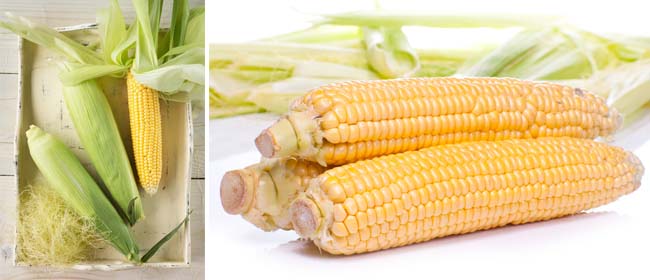Nothing says summer quite like a fat, juicy corn on the cob dripping with butter. And when it comes to sweetcorn, homegrown definitely beats shop-bought. Corn is at its prime (sweetest and juiciest) for only 72 hours, after which most of the sugar has turned to starch.
Let’s plant some sweetcorn!
Most sweetcorn varieties are ready for picking 90-100 days after planting, although maturity often differs from year to year depending on the temperatures. In cooler areas, where the season is shorter, it’s best to choose early maturing varieties.
Before planting, apply a balanced fertiliser to your soil and dig in organic matter.
Then sow seeds or plant seedlings in blocks, rather than rows. Corn is wind pollinated so block planting ensures better pollination and ear development.
Plant at least three rows for good pollination. That means you’ll need at least nine plants. Space rows 60-70 apart and each plant 30cm apart.
Corn cross-pollinates very easily, so if you want to ensure the corn you planted stays true to type, plant only one variety per season, or plant a couple of varieties of corn that mature at different times. If you plant an early variety and a late variety, the early one should have tasselled out and fertilised the ears by the time the late variety has started to tassel.
When seedlings reach 10cm high, apply a balanced fertiliser. Give them another feed when they get to 20cm high.
While corn is reasonably drought tolerant, a lack of water, especially when silks are developing, may affect corn quality or result in delayed harvest and uneven maturity. Water regularly, especially during the critical silking stage.
About three weeks after the silks on sweetcorn form, they’ll turn dry and brown. This is the time to pick them. You can double check that they’re ready, as the kernels should exude a milky substance when jabbed.
Different varieties of corn to try
Don’t just stop at golden corn. There are some really neat varieties to try, like ‘Hopi Pink’ or ‘Hopi Blue’ corn.
‘Hopi Blue’ has inky-blue kernels and the kernels of ‘Hopi Pink’ are bright pink, with some that are reddy-white. Both are usually ground into flour or cornmeal (‘Hopi Pink’ is considered one of the best flour corns), but the fresh cobs of ‘Hopi Blue’ can be eaten when young. Traditionally, the cornmeal from ‘Hopi Blue’ is used to make blue corn chips or tortillas. In the States you can also find blue cornflakes.
 My Favourites
My Favourites










Speak Your Mind